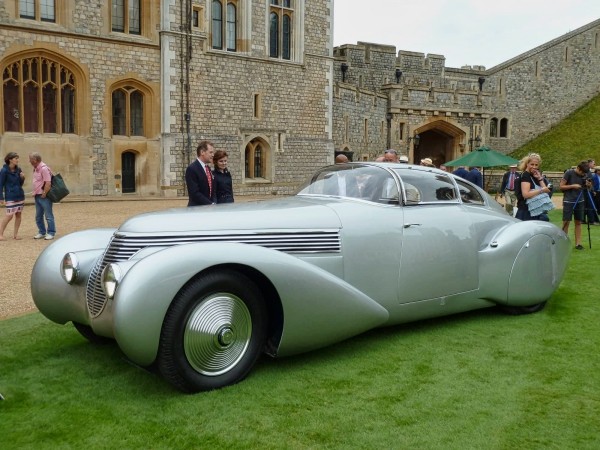Hispano-Suiza H6B Dubonnet Xenia (1938)
By motoring writer – Daniel Matthews
The history of the Hispano-Suiza marque begins in 1898, with Spanish artillery captain Emilio de la Cuadra starting electric car production in Barcelona under the name ‘La Cuadra’. Along the way he met Swiss engineer Marc Birkigt and hired him to work for the company in Spain, before they ultimately got bought out by José María Castro Fernández in 1902 and were renamed ‘Fábrica Hispano-Suiza de Automóviles’ (Spanish-Swiss Automobile Factory). A bankruptcy followed, but a 1904 restructuring saw them return as ‘La Hispano-Suiza Fábrica de Automóviles’, introducing four new engines over the next two years: a 3.8-litre; a 7.4-litre four-cylinder; and two large six-cylinder units. During World War I, Hispano-Suiza designed and produced aircraft engines under Birkigt’s direction, and is credited with the first practical ‘cast-block’ aero engine, and the first V8 aero engine.
Hispano-Suiza introduced the Marc Birkigt-designed H6 at the 1919 Paris Motor Show. It used a straight-six engine inspired by Birkigt’s aero efforts, but essentially half of his aero V12 design with a new overhead camshaft mechanism that made 160 bhp with a 6.6-litre displacement. It also excelled in the form of braking, using alloy drums all-round with the first power assist the industry had seen – under deceleration, the car would use its own momentum to provide braking power. This technology was later licensed to various other manufacturers, including Rolls-Royce.
This car is completely unique. The car you are looking at is a Hispano-Suiza H6B (a later model, with slightly more power) by clothed in a bespoke body by Saoutchik. The story starts with André Dubonnet, an inventor, racing driver and World War I fighter pilot who made fortunes from his engineering brilliance. To showcase a new independent suspension system he had developed for cars, he purchased a Hispano-Suiza H6 chassis and engine (slightly upgraded to H6C specs) and collaborated with Jean Andreau on its exterior design. The ‘Xenia’ (named after his deceased wife) was fitted with ‘Hyperflex’ suspension of his own design, with him claiming it had “the suppleness of a cat”, hence the Dubonnet logo. This technology was leaps and bounds ahead of the competition and was later used by General Motors with their Cadillac, Buick and Oldsmobile brands. The Xenia was also the first car to use curved windows, of which moved in a ‘gullwing’ fashion (as the doors hinged back rather than out).
The Xenia was Dubonnet’s personal car and was hidden during World War II, until the opening of the Saint Cloud tunnel in June 1946, where Xenia led the parade. It was purchased and restored sometime after by president of the French Hispano-Suiza club, Alain Balleret, and passed through a series of owners before arriving in the care of Peter Mullin, who displays it at the Mullin Automotive Museum in Oxnard, California. This should be on the bucket list for any car fan with a love for early coachwork and is filled with the world’s best collection of pre-war French and European cars.
– Acknowledgment – I would like to acknowledge and thank motoring writer Daniel Matthews for this post. His life-long passion for cars and combined automotive knowledge are both reflected in his fresh and informative style of writing. Dan’s articles and internet blogs are always interesting to read and easy to absorb, that’s why I’m so grateful to him for allowing me to share some of his work on this website. You can see more of Dan’s blogs on this website (link below) – Photo by – StevieA320 Car Photography |


